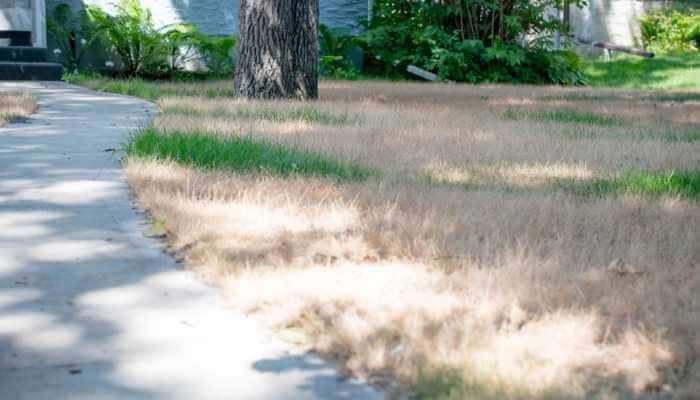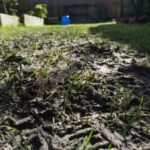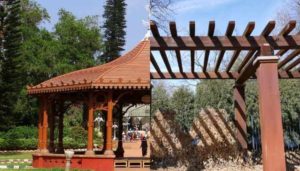You may not have noticed it, but there is actually a layer of organic material that rests between the grass blades in your yard and
Thatch is that thick layer of organic material between the blades of grass and the soil. As long as this layer is around 1 inch thick, that’s fine. If the layer is thicker, lessen it so more moisture, nutrients, and oxygen can get to the roots.
How did the thatch get there, and if you have too much, how can you get rid of it? Let’s find out!
What Causes Thatch?
Well, this is a simple thing to explain. If the dead organic material that your grass and landscaping plants and even trees shed outpaces the ability of the ground to break down the matter, you’re going to get thatch buildup. Why would the decomposition not happen quickly enough? Oh, there are several reasons.
If you over-use chemicals, you can get rid of all of your beneficial insects and microbes. These things help with decomposition and if they aren’t there to help, your soil becomes unhealthy.
How Can I Eliminate Thatch?
The first thing that most homeowners and lawn services usually decide to do for too much thatch is scalping the lawn. Scalping can rid your lawn of over-thatch and also open the area to gentle raking that can also break loose and remove overly thick thatch. So long as you don’t harm the roots of the grass, removing thatch can open the soil to being able to absorb more water, oxygen, and nutrients.
Just keep in mind that scalping to remove thatch is risky. If you do it at the wrong time, if you go too far, if you don’t follow through with aftercare–you can ruin your lawn rather than improve it. What other methods are out there?
Well, you can try “topdressing” your lawn. This is going to take some work and cost some money, but it may be the best way to handle the situation. Topdressing is spreading about ¼ inch of high-nutrient topsoil or even compost over your lawn. This will fall into place through the grass blades and eventually will decompose most of that thatch layer.
If you don’t have the money and you have the time, you can rake and collect the debris that you dig out of your grass. You’ll need a heavy rake or yard rake to really dig into the overly thick thatch layer. Also, be sure to remove all of it, and don’t let it resettle! This can be very labor intensive, and you need to be sure you don’t harm the roots of your grass. However, it works.
If you have the money and don’t want to handle the labor of raking yourself, know that you can rent or buy a dethatcher. These are machines made to do exactly what you would do manually. It looks a lot like a lawnmower and they cost around $100 should you want to buy one. I will not buy one, because I just won’t use it often enough to make it worth the investment.
Another thing you can do is aerate your lawn when you need to. I go into more detail about aeration in another article. Aeration is a method of taking divots of soil out of your yard so that water, oxygen, sunlight, and nutrients can get to the root systems to encourage growth. As you can imagine, aerating will puncture right through the thatch layer and speed up thatch decomposition.
How Can I Prevent Too Much Thatch in My Yard?
Don’t over-saturate your yard with chemicals that can eliminate beneficial microbes and insects. You want the organic material to decompose and not settle into thatch. When there is leaf litter (especially in fall) that is left on the ground, this can cause a build-up. Also, make sure the yard is draining well. If there is not enough drainage, decomposition can slow down and smaller particles can remain in the same place instead of being moved off.
In Conclusion
I hope I’ve explained the issues with thatch. You should also know what to do about it. I hope you can improve your lawn over the next year by implementing some maintenance to help. Don’t give up if you cannot afford to rent machinery yourself. Talk to your neighbors and see if they want to rent the machinery together so that you can take a weekend and all use the machinery in each yard. Or call on your HOA (if you have one). See if they would consider hiring a lawn care service that can come through and dethatch everyone’s yards and/or aerate the lawns.













